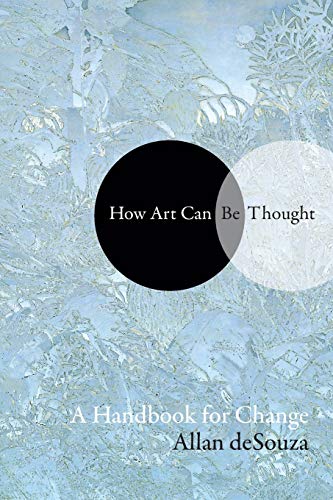

How Art Can Be Thought: A Handbook for Change
A**R
Essential reading for art educators
This has proved an invaluable book to me: as a practicing artist and art viewer, and as an educator. Moreover as an educator it has helped me facilitate critical conversation in my classroom about the terms students use to describe what is, and evaluate art; how do we judge if art is good, and if it is for the social good? This question a preoccupation for most students, producers and viewers and what DeSouza does in How Art Can Be Thought is to direct the the reader to question value systems which organize power in the everyday, in institutions, especially learning institutions. Are art institutions of learning, are implicated in oppression, and perpetuating value systems- it’s a really productive conversation for any classroom- I have found undergraduates just as hungry for this discussion and those who are not ready, I benefit also from discomfort. I love to start with the glossary of some of the most common terms used to discuss art , and then supplement with intro and chapter about Mark Rothko as we focus , introduce current and changing usage of these terms. Last DeSouza's work has been invaluable to me, as a practicing artist to talk with my family members and friends about art, who are non artists- to challenge gently and thoughtfully their assumptions about art and to introduce , maybe pique curiosity - add to their art viewing experience- how art functions - and how it has shaped power , and also drives change. I love this book so much - have bought it so many times over for friends and family - and make sure my students all have a copy- whether we get to it all in one semester, impossible- it’s a handbook I hope helps them unpack their own enculturation- and participate in its dismantling.
Trustpilot
1 month ago
2 months ago